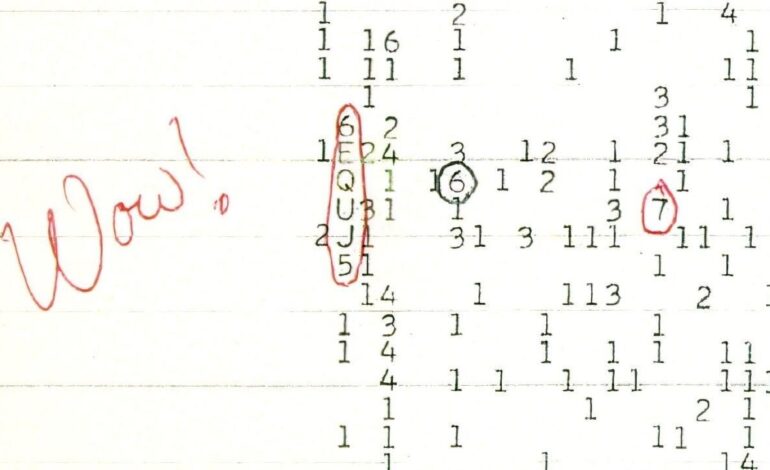Scientists Narrow Down Source of 1977 ‘Wow! Signal’ Mystery

In a significant development for astronomers and enthusiasts alike, researchers have made strides in identifying the origin of the enigmatic “Wow! Signal,” first detected on August 15, 1977. This strong radio signal, captured by the Ohio State University’s Big Ear radio telescope, had long been a source of speculation regarding potential extraterrestrial intelligence. Recent findings suggest a more natural astrophysical explanation, shifting the focus away from alien contact.
The “Wow! Signal” was discovered by astronomer Jerry Ehman, who famously marked his astonishment on a printout with the word “Wow!” The signal’s persistent mystery, spanning nearly five decades, has drawn the attention of scientists worldwide. Currently, researchers from the Planetary Habitability Laboratory at the University of Puerto Rico at Arecibo are leading an initiative known as the “Arecibo Wow! Project.” This effort seeks to analyze unexplained radio signals and decode the mystery surrounding the “Wow! Signal.”
Revisiting the Signal with Modern Science
Under the direction of Abel Méndez, the team has revisited decades of archival data from the Ohio State University SETI program. The aim is to reassess the signal with contemporary scientific techniques, likening their efforts to “space archaeology.” Their latest research provides a refined characterization of the signal, offering promising insights into its origin.
“Our newly derived properties may help finally pinpoint the source of the Wow! Signal,” explained Méndez in an interview with Space.com. The research team is preparing to publish additional findings that may shed even more light on this enduring cosmic puzzle. They aim to archive and share all data from the Big Ear telescope by 2027, coinciding with the 50th anniversary of the original detection.
In their recent updates, researchers have indicated that the “Wow! Signal” could likely have a natural source rather than being a product of radio interference, which has become increasingly unlikely. They propose that the signal might have been caused by a sudden brightening of the hydrogen line in interstellar clouds, potentially triggered by transient radiation sources such as magnetar flares or soft gamma repeaters.
Citizen Science Initiative Expands Search
The ongoing investigation into the “Wow! Signal” has also inspired the creation of the Wow@Home project. This citizen science initiative allows individuals to participate in the search for similar signals and other rare cosmic events in real-time. Officials behind Wow@Home have noted that even small telescopes could potentially detect signals with strength comparable to the original “Wow! Signal.”
The Wow@Home project presents a cost-effective opportunity for aspiring astronomers. A complete setup can be assembled for approximately $500, including a dedicated computer. Rather than selling systems, the project provides guidelines for necessary components and free software to connect to the Wow@Home network. This network aims to facilitate the detection of transient events that professional telescopes may not consistently monitor.
The software being developed for Wow@Home is based on analysis methods tailored to identify signals similar to the original “Wow!” and is part of the broader Arecibo Wow! initiative. For those interested in participating, further information is available on the project’s website.
As the research continues, the “Wow! Signal” remains a tantalizing enigma, with scientists closer than ever to unraveling its secrets. The findings not only enhance our understanding of this particular signal but also pave the way for future explorations in the search for extraterrestrial intelligence.






